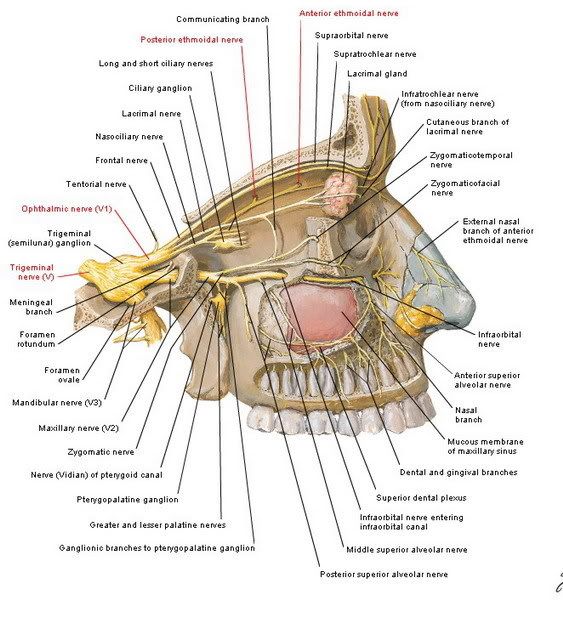A computer-generated movie on hemophilia ou l'hémophilie en images de synthèse.mpg - YouTube
AIIMS May 2010- Q 10.
All of the following muscles retract the scapula except:
a. Trapezius.
b. Rhomboid major.
c. Rhomboid minor.
d. Levator scapulae.
Answer:
d. Levator scapulae.
AIIMS May 2010- Q 9.
Anterior ethmoidal nerve supplies all except:
a. Maxillary sinus.
b. Interior of nasal cavity.
c. Dural sheath of anterior cranial fossa.
d. Ethmoidal air cells.
The anterior ethmoidal nerve is a nerve which provides sensory branches to the nasal cavity. The branches it gives rise to are called the internal and external nasal branches of the anterior ethmoidal nerve, and the external branch ultimately innervates skin on the lateral sides of the nose.
Answer:
a. Maxillary sinus.
AIIMS May 2010- Q 8.
Appendices epiploicae present in:
a. Appendix
b. Caecum
c. Rectum
d. Sigmoid colon.
Although the size of the large bowel varies among subjects, it has three distinctive features that distinguish it from the small intestine. These are the presence of:
The taeniae coli are three narrow but distinct longitudinal bands of smooth muscle which run along the entire length of the cecum and colon. The three taeniae coli converge at the base of the vermiform appendix on the cecum. This is a useful anatomical and clinical feature which can be used to identify the base of the vermiform appendix in the gross anatomy laboratory or during surgery. The teniae coli are not present on the rectum, anal canal and vermiform appendix.
Answer:
d. Sigmoid colon.
AIIMS May 2010- Q 7. Modified Helfet's test
A healthy young athlete is sitting at the edge of the table with knee at 90 deg flexion. He fully extends it. What will happen?
a. Movement of tibial tuberosity towards the centre of patella.
b. Movement of tibial tuberosity towards the lateral border of patella.
c. Movement of tibial tuberosity towards medial border of patella.
d. No change in position.
Answer:
b. Movement of tibial tuberosity towards the lateral border of patella.
AIIMS May 2010- Q 6.
Coeliac plexus is located:
a. Anterolateral and around the aorta.
b. Posterolateral and around the aorta.
c. Anteromedial to lumbar sympathetic chain.
d. Posteromedial to lumbar sympathetic chain.
Answer:
c. Anteromedial to lumbar sympathetic chain.
AIIMS May 2010- Q 5.
Middle superior alveolar nerve is a branch of:
a. Mandibular division of trigeminal.
b. Palatine division of maxillary nerve.
c. Anterior nasal division of maxillary n.
d. Infraorbital n.















